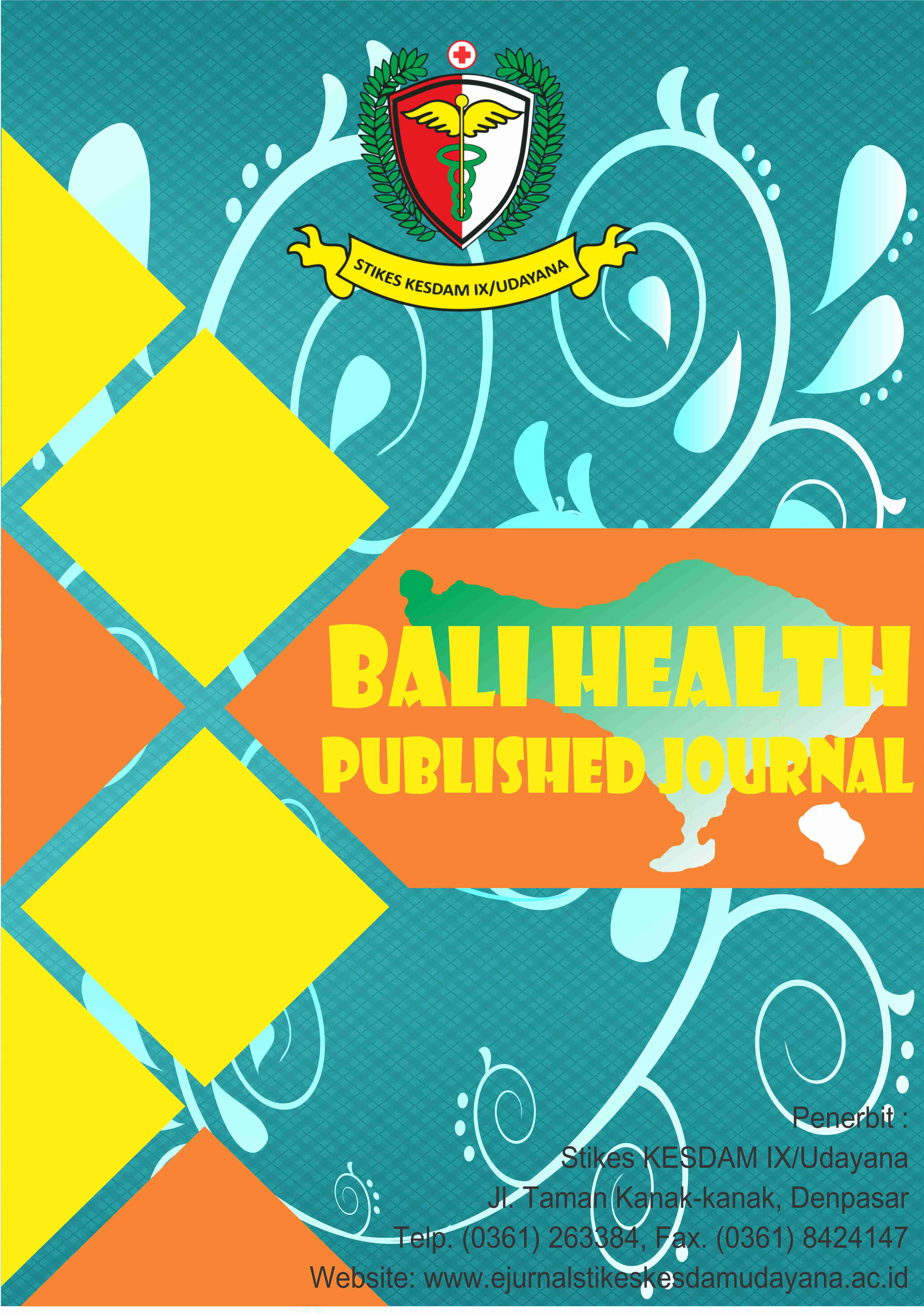Pengaruh Relaksasi Otot Progresif Terhadap Kemampuan Mengontrol Marah pada Pasien Resiko Prilaku Kekerasan di Rumah Sakit Jiwa Provinsi Bali
DOI:
https://doi.org/10.47859/bhpj.v6i2.570Keywords:
Resiko Prilaku Kekerasan, Kemampuan Mengontrol Marah, Relaksasi Otot ProgresifAbstract
Background: Mental disorders are a syndrome of behavioral patterns or disorders that occur in the brain which are characterized by disturbed behavior, thought processes, emotions and perceptions. Violent behavior is an angry reaction that is expressed by making threats, injuring other people, or destroying the environment. One of the nursing actions that patients can take to control anger is progressive muscle relaxation. To determine the effect of progressive muscle relaxation on the ability to control anger in patients at risk of violent behavior at the Rumah Sakit Jiwa Provinsi Bali. Methods: Pre-Experimental research design One Group Pre-Test & Post-Test with Paired T-Test conducted at the Rumah Sakit Jiwa Provinsi Bali. Data collection used a questionnaire sheet with a Purposive Sampling technique with a sample size of 37 people. Results: The results of this research showed that the average value before the intervention was given was that the value of the ability to control anger was a Pre Test p-value of 48.6% and a Post Test p-value of 54.1% so that the p-value obtained was > 0.05 with a p-value of 0.000, this value is less than < 0.05. Conclusion: There is a significant influence on the provision of progressive muscle relaxation movement interventions on the ability to control anger in patients at risk of violent behavior at the Bali Provincial Mental Hospital.
References
Alvionita, S., & Wongkar, D. (2018). Pengaruh Relaksasi Otot Progresif Terhadap Kecemasan. Analytical Biochemistry, 11(1), 1–5. http://repository.stikes-bhm.ac.id/266/1/46.pdf.
Anggreni, D. (2022). Buku Ajar Metodologi Penelitian Kesehatan. Penerbit STIKes Majapahit Mojokerto buku ajar.
Apriliana, A., & Nafiah, H. (2021). Stigma Masyarakat Terhadap Gangguan Jiwa: Literature Review. Prosiding Seminar Nasional Kesehatan, 1, 207–216. https://doi.org/10.48144/prosiding.v1i.658.
Geghi Liliana, A. (2023). Asuhan keperawatan jiwa pada tn. N dengan fokus intervensi relaksasi otot progresif untuk mengontrol marah pada pasien jiwa resiko perilaku kekerasan.8(1),2775–1163. http://ejournal.annurpurwodadi.ac.id/index.php/TSCD3Kep52.
Lestari, A., Jannah, S. R., & R, F. D. (2022). Penerapan Terapi Memaafkan Pada Pasien Risiko Perilaku Kekerasan?: Suatu Studi Kasus Application of Forgiveness Therapy in Patients at Risk for Violent Behavior?: A Case Study. 1, 128–136.
Liviana, & Suem, T. (2019). Faktor predisposisi pasien resiko perilaku kekerasaan. Jurnal Ilmiah Kesehatan Jiwa, 1(1), 27–38.
Malfasari, E., Febtrina, R., Maulinda, D., & Amimi, R. (2020). Analisis Tanda dan Gejala Resiko Perilaku Kekerasan pada Pasien Skizofrenia. Jurnal Ilmu Keperawatan Jiwa, 3(1), 65. https://doi.org/10.32584/jikj.v3i1.478.
Nuraini, B. A., & Priambodo, G. (2023). Penerapan Terapi Progressive Muscle Relaxation (Pmr) Terhadap Kontrol Marah Pada Pasien Resiko Perilaku Kekerasan Di Ruang Gatot Kaca Rsjd Dr. Arif Zainudin Surakarta. 23, 1–10.
Pardede, J. A. (2019). Standar Asuhan Keperawatan Jiwa Dengan Risiko Perilaku Kekerasan. 3–7. https://doi.org/10.31219/osf.io/we7zm
Rasa, A., & Warson. (2012). SKRIPSI.pdf. Ringkasan Ihya’ Ulûmuddîn, Pent. Abdul Rasyad Siddiq, 515, 15–45.
Pardede, J. A., Simanjuntak, G. V., & Laia, R. (2020). The Symptoms of Risk of Violence Behavior Decline after Given Prgressive Muscle Relaxation Therapy on Schizophrenia Patients. Jurnal Ilmu Keperawatan Jiwa, 3(2), 91–100.
https://doi.org/http://dx.doi.org/10.32584/jikj.v3i2.534.
Prasetya, A. S. (2018). Efektifitas Jadual Aktivitas Sehari-Hari Terhadap. Jurnal Kesehatan Panca Bhakti Lampung, VI(1), 18–29.
Resiko, P., Kekerasan, P., & Review, L. (2022). 3 1,2,3. 1(1), 73–79.
Wahyudi, H., Putri, P. A. N., & Wilda, L. O. (2023). Pengaruh Latihan Asertif Terhadap Kekerasan Di Puskesmas Rejoso Kabupaten Nganjuk’, Jurnal Sabhanga, 5(1), pp. 30–41.Available at: http://e-journal.stikessatriabhakti.ac.id/index.php/sbn1/article/view/21/21.

